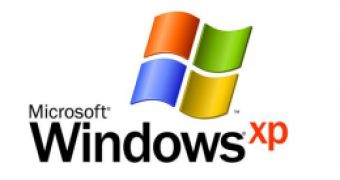Windows XP Service Pack 3 and Windows Vista Service Pack 1 debuted into beta almost concomitantly in mid 2007. From the early pre-beta versions, the two service packs had synchronized development milestones at no more than a few weeks away. Case in point: the Release Candidate 1 builds dropped in November, as well as the RC Refresh 1 and RC Refresh 2 versions that followed in January 2008. Then, Vista SP1 and XP SP3 went their separate ways. Following Vista SP1 RC Refresh 2 the code for the service pack went gold on February 4, 2008. And only a few days after the RTM of Vista SP1, on February 7, the Redmond company served the bites for Release Candidate 2 of XP SP3, setting the XP SP3 RC2 build completely free on February 19. Windows XP SP3 RC2 is available for download here.
But the truth of the matter is that XP SP3 is crawling toward the finish line. With XP SP2 dropped all the way into 2004, Microsoft has now had XP SP3 cooking for approximately four years. Of course that the Windows Server 2008 and Windows Vista priorities came into play. The intimate connection of Vista SP1 and Windows Server 2008 SP1 pushed XP SP3 to the background. And Microsoft is in no hurry to update XP, even though SP2 was introduced all the way in 2004.
The latest documentation accompanying the Release Candidate 2 build of the service pack does not refer specifically to a beta label. In this context, the "Release Notes for Windows XP Service Pack 3" might be a clue indicating the proximity of the third and final service pack for Windows XP. Of course that the release notes actually point to XP SP3 RC2, under the general reference of "this Release Candidate of Windows XP Service Pack 3."
Those familiar with the previous beta releases of XP SP3 will notice no differences in terms of the functionality that will be added with the service pack. It's the same list made available with the December Release Candidate of XP SP3 - black hole router detection, Network Access Protection, Credentials security service provider, Descriptive security options control panel, Enhanced security for Administrator and Service policy entries, Microsoft Kernel Mode Cryptographic Module and changes in Windows Product Activation.
On top of the new features, there are also items that were made available as standalone downloads, and that will be included as default components in XP SP3: Microsoft Windows Imaging Component (WIC), Microsoft Management Console (MMC) 3.0, Microsoft Core XML Services (MSXML) 6.0, Microsoft Windows Installer 3.1 v2 (3.1.4000.2435), Background Intelligent Transfer Service (BITS) 2.5, Digital Identity Management Service, IPsec Simple Policy Update for Windows Server 2003 and Windows XP, Peer Name Resolution Protocol (PNRP) 2.1 and Wi-Fi Protected Access 2.
Microsoft also provides information about a few of the glitches of deploying XP SP3, focused on custom installation, a problem impacting Windows XP Home Edition N and Windows XP Professional N. The integration of XP SP3 will also impact networking, printing, remote desktop connections and even Windows Media Center. And there is also an issue affecting the XP Home Edition and the XP Professional operating systems running on Mac Pro, Mac Mini, MacBook, MacBook Air, MacBook Pro, or iMac when installing XP SP3, delivering the "out of disk space" error to end users.
Microsoft explained the steps needed to be taken in order to avoid the error: "manually create a necessary registry key as follows: click Start, click Run, type regedit, and then click OK. Locate and then click the following registry subkey: HKEY_LOCAL_MACHINESOFTWAREMicrosoftWindowsCurrentVersionSetup. On the Edit menu, point to New, and click String Value. In the text box under the Name column, type BootDir and press ENTER. Right-click the name BootDir, and then click Modify. In the Edit String Value dialog box, type the drive letter for your system drive, and then click OK. For example, if your system drive is C:, type C:."
But the real issue that Microsoft needs to be fixing is the slow crawling of XP SP3 towards the finish line. According to a Customer Service, Technical Support change request from EMEA CSS BSG - Release Management and Readiness for XP SP3, the date of implementation is March 24. For Windows Vista the date is February 18, and the latest signs of life on the Windows Vista front come to indicate that the general availability of the RTM build is March 18. Could this mean that XP SP3 will slip all the way into March, and even April 2008?

 14 DAY TRIAL //
14 DAY TRIAL //